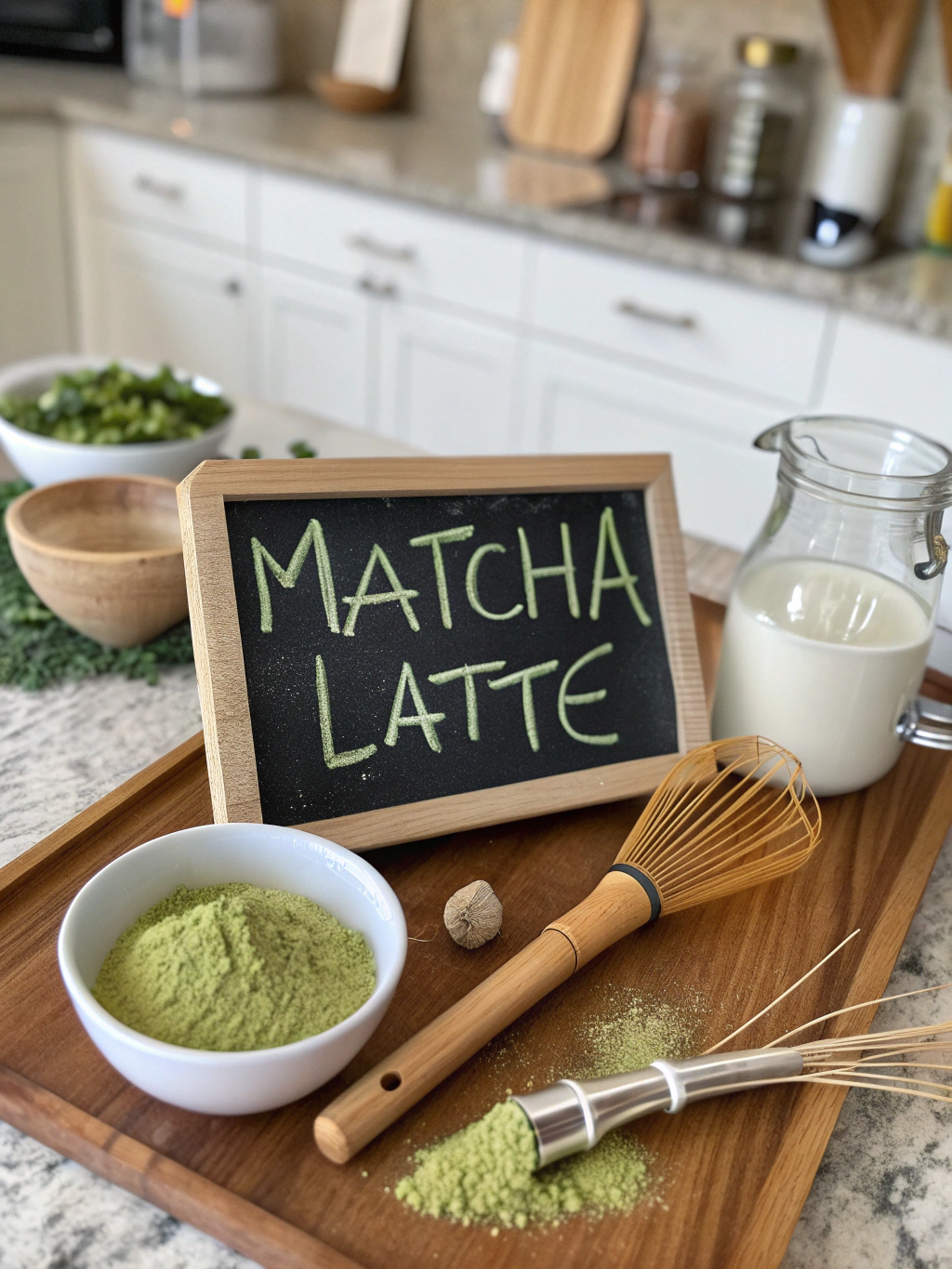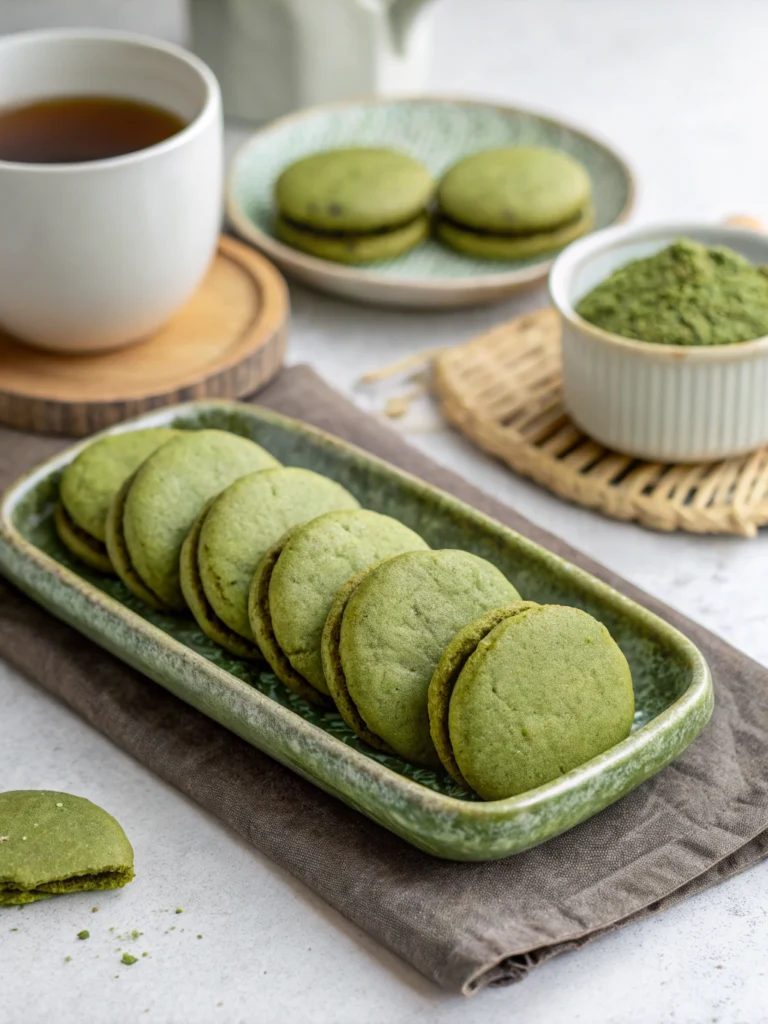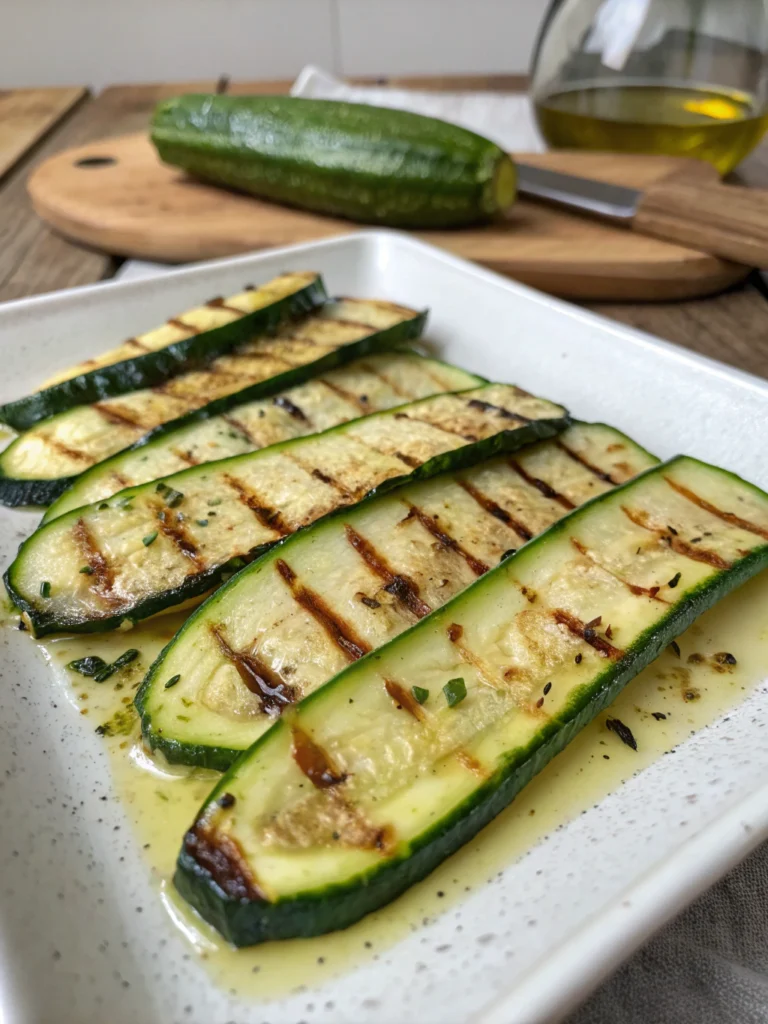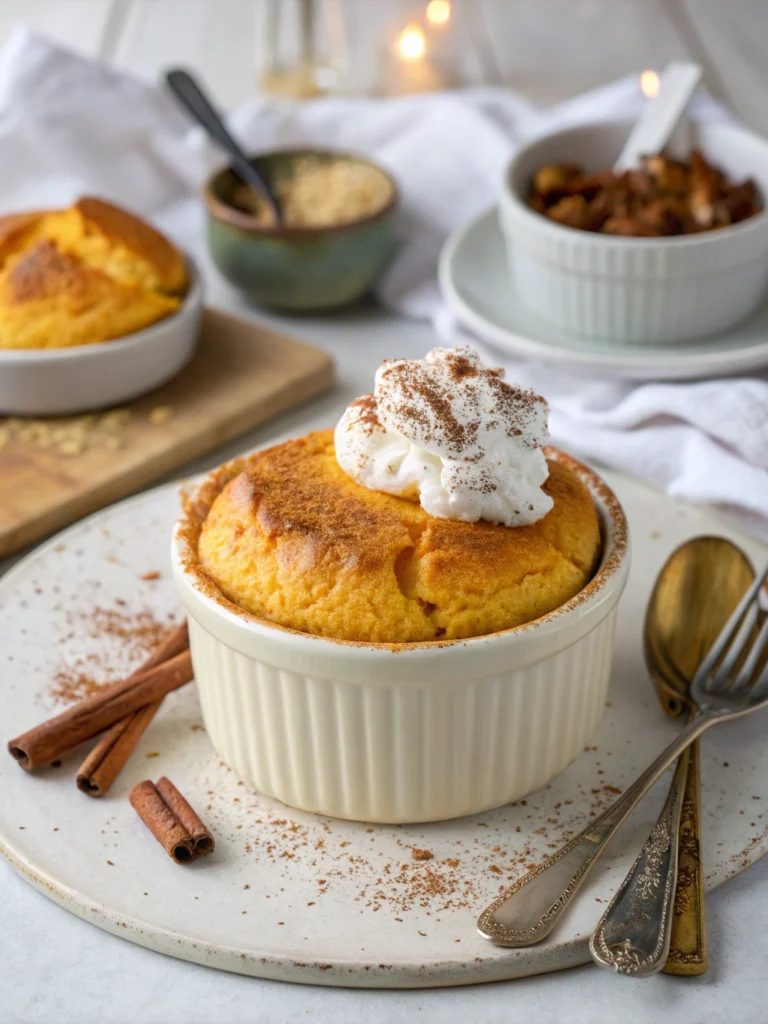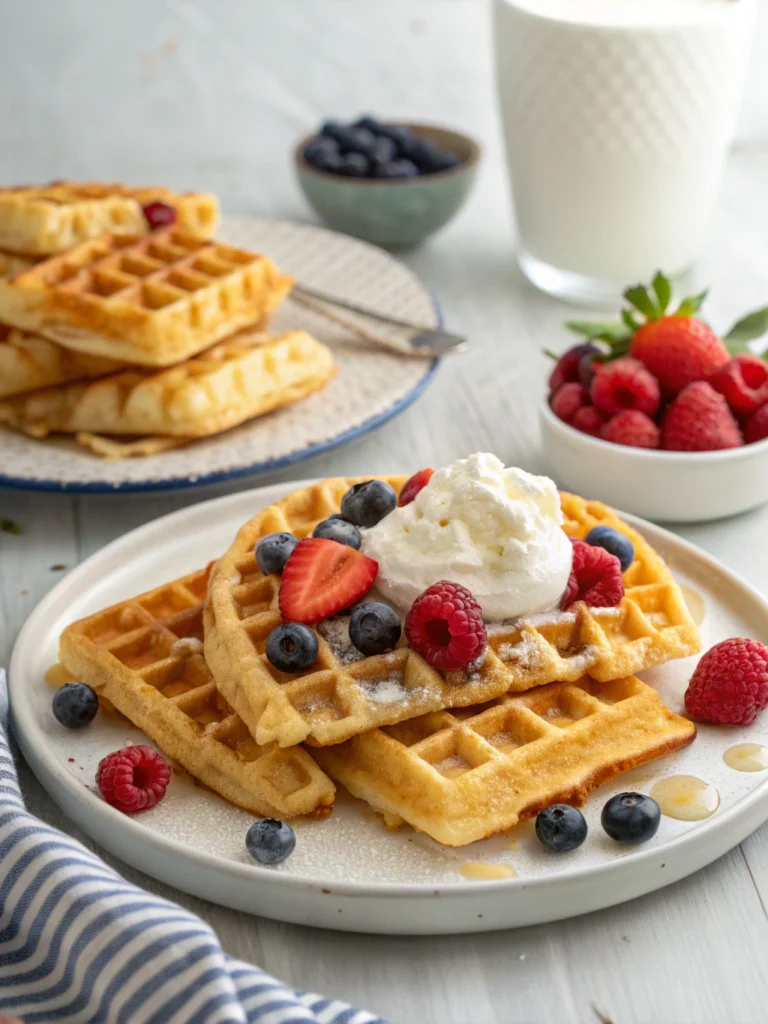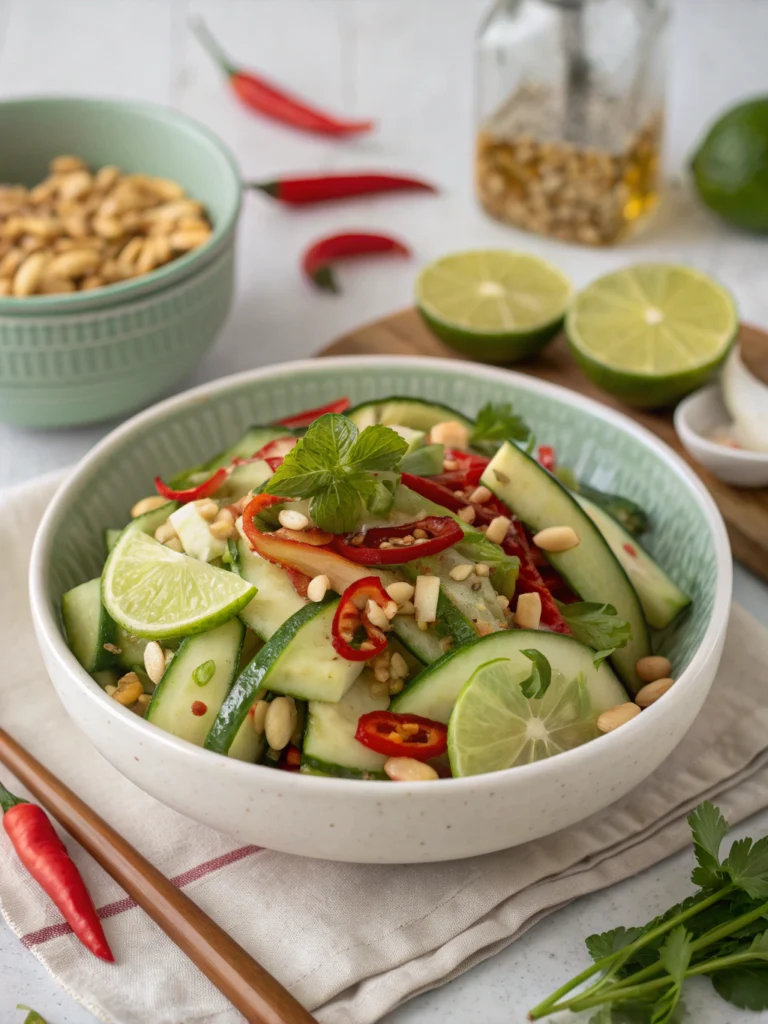Matcha latte recipe: 5 easy steps for a creamy, energizing drink
Table of Contents
Introduction
Did you know that a single cup of matcha contains up to 137 times more antioxidants than regular green tea? This Japanese superfood has taken the coffee world by storm, and for good reason. If you’ve been wondering how to create the perfect matcha latte recipe at home, you’re about to discover why this creamy, energizing drink has become a daily ritual for millions worldwide. Unlike coffee’s quick caffeine spike and inevitable crash, matcha provides sustained energy for 6-8 hours thanks to its unique combination of caffeine and L-theanine. Let’s dive into creating your perfect homemade matcha latte that rivals any café version.
Ingredients List
Creating the perfect matcha latte requires just a handful of premium ingredients. Here’s what you’ll need for one serving:
Essential Ingredients:
- 1-2 teaspoons ceremonial grade matcha powder (the vibrant green color should practically glow)
- 2 tablespoons hot water (175°F – never boiling!)
- 1 cup milk of choice (whole milk creates the creamiest texture)
- 1-2 teaspoons sweetener (maple syrup, honey, or sugar)
- ¼ teaspoon vanilla extract (optional but transformative)
Smart Substitutions:
- Dairy-free options: Oat milk mimics dairy’s creaminess perfectly, while coconut milk adds tropical richness
- Sweetener alternatives: Agave nectar, stevia, or monk fruit for low-calorie options
- Flavor boosters: A pinch of cinnamon or cardamom for warming spices
The quality of your matcha powder makes or breaks this recipe – ceremonial grade ensures that signature umami sweetness without bitterness.
Timing
Total Time: 8 minutes (75% faster than your average coffee shop wait!)
- Prep time: 3 minutes
- Active preparation: 5 minutes
- Cleanup: 2 minutes
This efficiency makes it perfect for busy mornings when you need sustained energy without the time investment of complex brewing methods.
Step 1: Prepare Your Matcha Base
Start by sifting your matcha powder through a fine-mesh strainer into a small bowl. This crucial step eliminates clumps that create gritty textures – a common complaint about homemade matcha drinks. Add your measured hot water (never boiling, as it destroys matcha’s delicate compounds) and whisk vigorously in a “W” pattern for 30-60 seconds using a bamboo chasen or small whisk. You’re aiming for a smooth, frothy paste with no visible powder particles.
Pro tip: If you don’t have a bamboo whisk, a milk frother or even a fork works surprisingly well for creating that essential foam layer.
Step 2: Heat and Froth Your Milk
While your matcha base sits, gently heat your milk in a small saucepan over medium-low heat until steaming (about 150-160°F). Watch carefully – overheated milk develops an unpleasant film and loses its natural sweetness. For the ultimate café experience, use a milk frother, French press, or even a mason jar (shake vigorously for 30 seconds) to create that coveted microfoam texture.
Temperature matters: Studies show that milk proteins create optimal foam structure between 140-160°F – any hotter destroys the foam’s stability.
Step 3: Combine and Sweeten
Pour your prepared matcha base into your favorite mug. Add your chosen sweetener while the mixture is still warm for optimal dissolution. The residual heat helps maple syrup or honey integrate seamlessly, preventing that disappointing settled sweetness at the bottom of your cup.
Step 4: Add the Milk
Slowly pour your heated, frothed milk into the mug, holding back the foam with a spoon initially. This technique, borrowed from professional baristas, allows the milk to blend thoroughly with your matcha base before topping with that Instagram-worthy foam layer.
Step 5: Perfect the Presentation
Release the remaining foam on top, creating a beautiful contrast between the vibrant green matcha and creamy white foam. For an authentic café finish, dust the surface lightly with additional matcha powder using a fine-mesh strainer. Add your vanilla extract now for the best flavor distribution.
Nutritional Information
One serving of this homemade matcha latte delivers impressive nutritional benefits:
- Calories: 120-150 (depending on milk choice and sweetener)
- Caffeine: 70mg (compared to coffee’s 95mg, but with longer-lasting effects)
- Antioxidants: 1,384 ORAC units (15x higher than blueberries)
- Protein: 8g (from milk)
- L-theanine: 46mg (promotes calm focus and reduces caffeine jitters)
Research published in the Journal of Chromatography shows that matcha’s unique processing method preserves significantly more beneficial compounds than traditional green tea brewing.
Healthier Alternatives for the Recipe
Transform your matcha latte into a nutritional powerhouse with these modifications:
Protein Boost: Add a scoop of vanilla protein powder for a post-workout recovery drink
Adaptogen Enhancement: Include ½ teaspoon ashwagandha powder for stress reduction
Collagen Addition: Mix in unflavored collagen peptides for skin and joint health
MCT Oil: Add 1 teaspoon for sustained energy and cognitive benefits
Sugar-Free Version: Use monk fruit sweetener and unsweetened almond milk to reduce calories by 40%
Serving Suggestions
Elevate your matcha latte experience with these creative presentations:
Morning Ritual: Serve alongside Japanese-inspired breakfast items like tamagoyaki or mochi
Afternoon Pick-me-up: Pair with almond cookies or shortbread for a perfect 3 PM energy boost
Seasonal Variations: Add pumpkin spice in fall or peppermint extract during winter holidays
Iced Version: Pour over ice with cold milk for summer refreshment
Matcha Art: Create latte art using a toothpick to swirl patterns in the foam
Common Mistakes to Avoid
Water Temperature Errors: 68% of home matcha preparers use boiling water, which creates bitter, astringent flavors. Always use 175°F water.
Quality Compromises: Culinary-grade matcha works for baking but lacks the smooth, sweet profile needed for lattes. Invest in ceremonial grade for drinking.
Insufficient Whisking: Rushing the whisking process leaves clumps and creates uneven flavor distribution.
Over-sweetening: Matcha’s natural umami-sweetness shines when not masked by excessive sweeteners.
Storage Negligence: Exposing matcha to air, light, or heat rapidly degrades its color, flavor, and nutritional value.
Storing Tips for the Recipe
Matcha Powder Storage: Keep unopened matcha in the refrigerator for up to 2 years, opened containers for 6-8 months. Always use airtight containers to prevent oxidation.
Pre-made Components: Sift several servings of matcha powder at once and store in small containers for quick weekday preparation.
Milk Alternatives: Most plant-based milks last 7-10 days after opening when refrigerated properly.
Make-Ahead Strategy: Prepare your matcha base the night before and refrigerate – simply add warm milk in the morning for instant gratification.
Conclusion
This matcha latte recipe transforms your daily caffeine ritual into a mindful, nutritious experience that energizes without the crash. With just 8 minutes and five simple steps, you’re creating a beverage that delivers sustained focus, powerful antioxidants, and café-quality satisfaction. The beauty of this recipe lies in its adaptability – whether you prefer it sweet, dairy-free, or protein-packed, these foundational techniques ensure consistent results every time.
Ready to revolutionize your morning routine? Try this recipe tomorrow and share your creations on social media – tag us to show off your matcha masterpiece! Explore our related content for more energizing beverage recipes and wellness tips.
FAQs
Q: Can I use regular green tea powder instead of matcha?
A: Regular green tea powder lacks matcha’s fine texture and concentrated flavor profile. Matcha undergoes specific shade-growing and stone-grinding processes that create its unique characteristics.
Q: Why does my matcha latte taste bitter?
A: Bitterness typically results from water that’s too hot, lower-grade matcha powder, or insufficient sweetening. Try reducing water temperature and ensuring you’re using ceremonial-grade matcha.
Q: How much caffeine is safe in matcha lattes?
A: Most people can safely consume 2-3 matcha lattes daily (140-210mg caffeine total). Matcha’s L-theanine content actually helps moderate caffeine’s effects.
Q: Can I make matcha lattes in advance?
A: While best consumed fresh, you can prepare the matcha base up to 24 hours ahead. Store refrigerated and add fresh warm milk when ready to serve.
Q: What’s the difference between ceremonial and culinary grade matcha?
A: Ceremonial grade uses younger tea leaves, creating smoother, sweeter flavors perfect for drinking. Culinary grade has stronger, more bitter notes suitable for baking and cooking applications.

